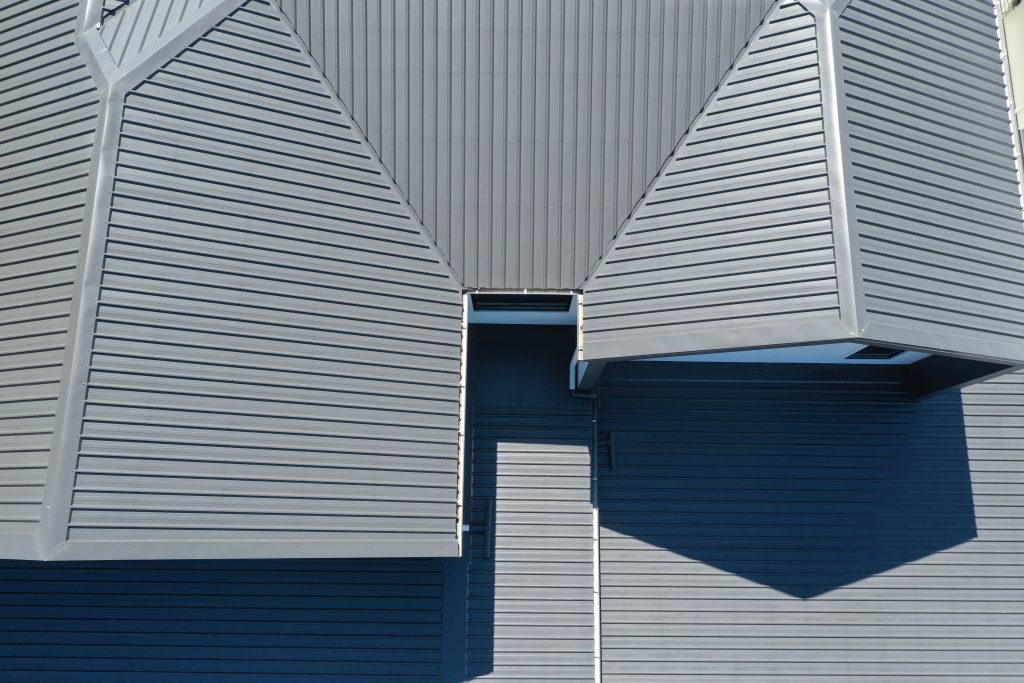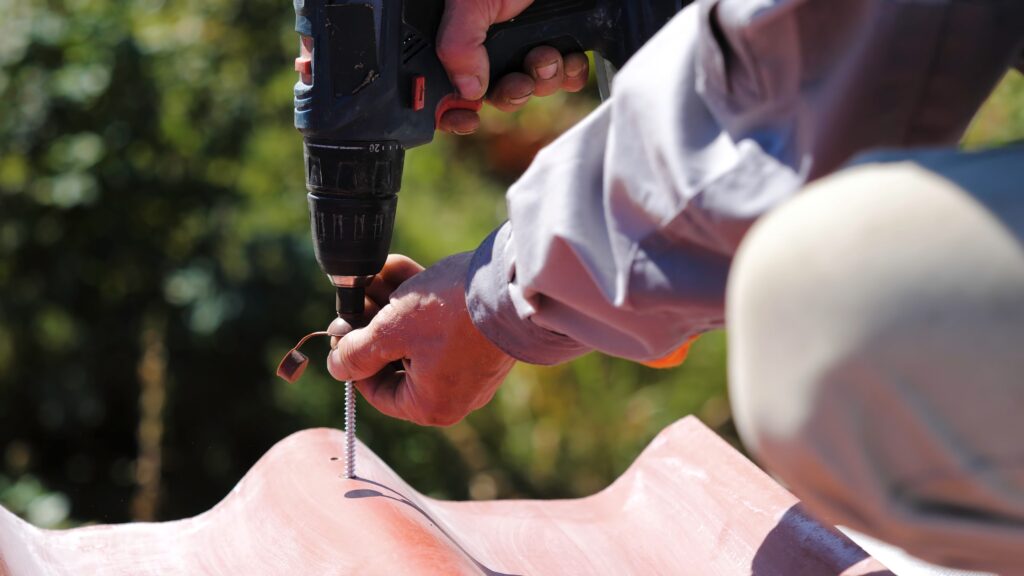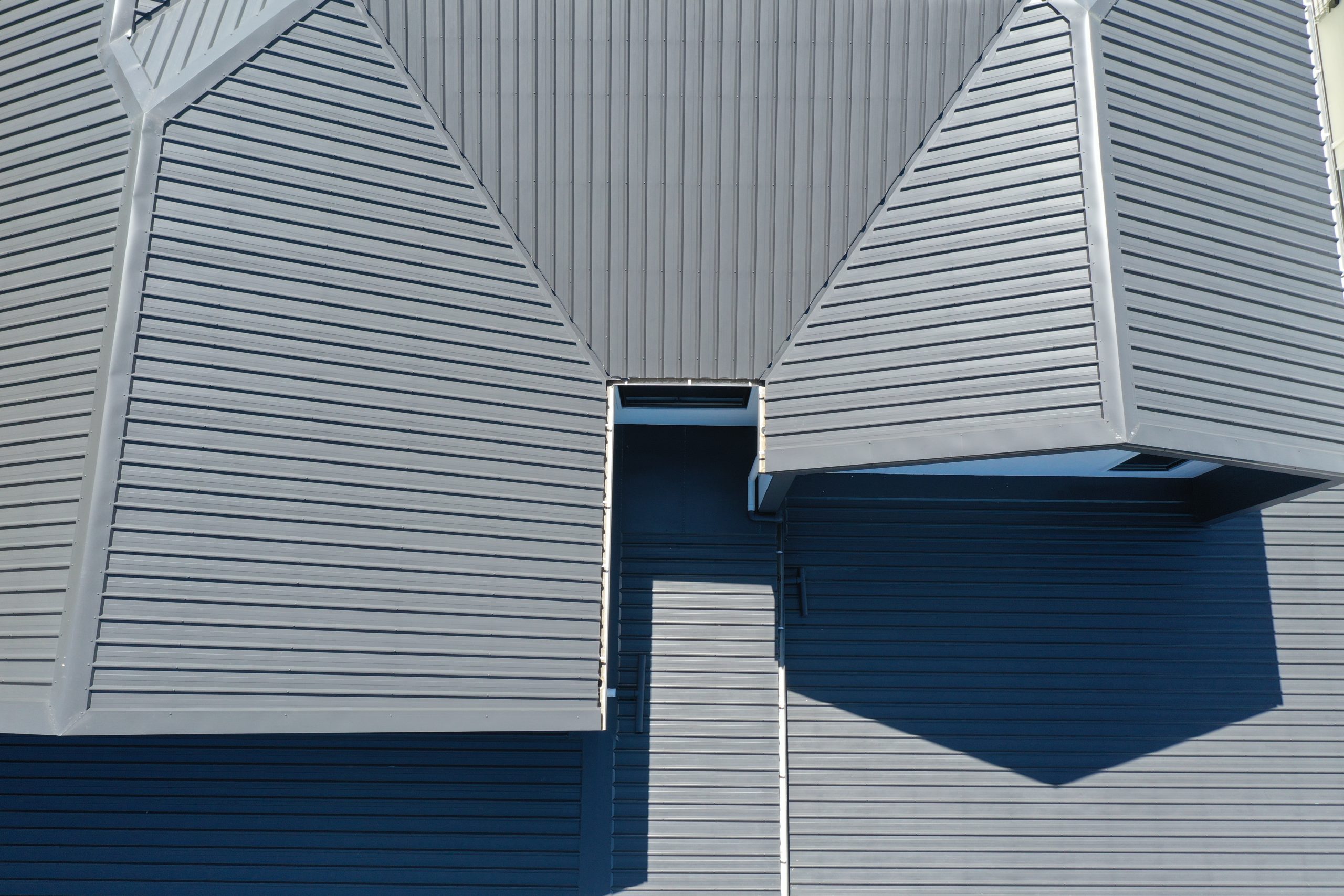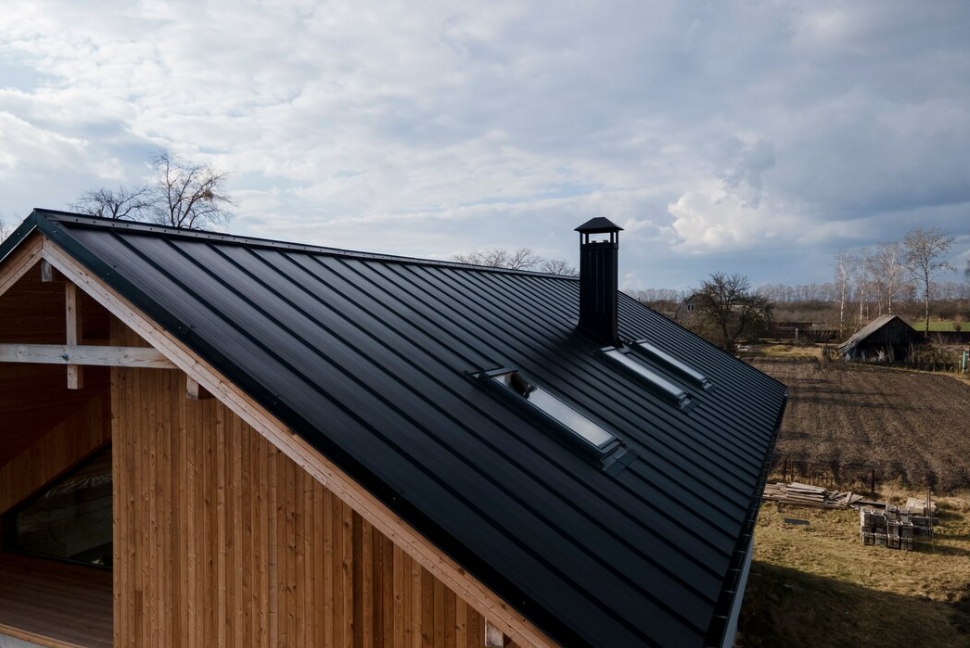The five main types of roofing materials used in Australia are steel, terracotta tiles, synthetic slate, green (living) roofs, and asphalt or wood shingles. Each offers unique benefits for Australian climates, balancing durability, cost, and energy efficiency. Below, we compare these materials and explain how to choose the best option for your home.
A roof isn’t just a protective shield. It’s the crown on the architectural styles of your home. It must stand up to the often harsh Australian weather. Depending on where you live, a searing Sun, cyclones, and lashing rain will test your roof’s durability. Constant roof repair is a headache. Why add to your financial burden? Choosing the right roofing materials is essential for ensuring your roof can withstand the elements.
Your roof should also have aesthetic value. Asphalt roofing or a stylishly installed clay tile enhances your property value. If it isn’t attractive, it drags down the house’s value. This is a problem when it’s time to sell.
If you want to know how to choose the best roofer in Brisbane, read this.
Here are the best roofing options for Australian homes to balance longevity and cost-effectiveness.
Key Takeaways

Determining the best yypes of roofing materials
How do you make a decision which roofing material is most best for a Brisbane home or business? There is a wide range of roofing supplies available, there are metal options, tiles, and modern composites finding the best fit can be a bit overwhelming.g. If you’re plan on a new roof or roof replacement, think about these key factors to help you choose the most suitable material for your needs.
Weatherproofing
The ever-changing weather presents many challenges to your roof, impacting it every single day. From scorching sun to downpours and high winds, the roof must be able to handle Brisbane’s climate every year. Making the right material choice from the wide range of selections of roofing supplies is essential. Metal roofing, especially raised seam designs, is designed for durability and water runoff, making it a choice for homes and businesses across the region.
UV exposure. Any Brisbane resident can tell you that we’re blessed with beautiful sunny weather for much of the year. That’s great for a beach day, it can cause issues for your roof. Lesser quality materials can warp and split under persistently hot and sunny conditions. The right roof can reflect the light and remain in good condition for the long-term.
Rainy season. Choose a roof that can effectively deal with wet conditions. Your roof should effectively drain water. Any trapped water can weaken other roofing material. this leads to rot or rusting. It can also cause mould build-up. Mould can pose a health risk.
Hail and impact damage. Hail can crack tiles and dent metal roofing. This can cause damage across the roof that’s expensive to repair. The right material should sustain minimal damage during hail storms. Impacts can also come from storm damage. Stray branches and other debris can cause problems.
Fire damage. Brisbane typically experiences fewer bushfires than major cities further south. However, it’s important to still be prepared. Well-treated resources are better able to protect homes and businesses from fire destruction.
Durability and lifespan
Roofing suppliers have comprehensive range of increasingly popular roofing materials, such as polycarbonate roofing, each with its own estimated lifespan a consideration in any roofing project or roof design that are properly maintained. Asphalt shingles are part of the extensive range of roofing products and are commonly used, though they typically offer limited durability, lasting around 15 to 30 years. Polycarbonate roofing, known for its compact and UV-resistant properties with an expected lifespan of 10 to 20 years.
In contrast, high-quality steel roofing stands out for its durability, often lasting 70 years or more making it a long-term benefit and cost effective for both residential homes and commercial roofing applications. Terracotta is a best choice, often lasting more than a century when well maintained for modern homes.

Polycarbonate roofing products may have a shorter lifespan for both residential and commercial. When selecting roofing products, it’s important to factor in roof pitch, as some materials are better suited to steeper or flatter roof designs.
How long your roof lasts depends greatly on how well it’s maintained. Regular inspections and prompt repairs are key to preserving its condition over time. Whether your roof is made from metal, such as corrugated iron, or another material from the wide range of roofing supplies available, proper upkeep plays a crucial role in extending its lifespan and performance.
Curb appeal
The roof is one of the most conspicuous parts of your house. If you’re thinking of putting your house on the market, you want it to be as attractive as possible. A good-looking roof made of quality materials will help maximise a house’s resale value. The material should fit with the house’s look. Texture, colour, and design features all impact a roof’s appeal.
Energy efficiency
The type of roofing used plays a crucial role in regulating a building’s energy efficiency. Whether for residential or commercial construction, selecting the right material from the available range of roofing options can significantly reduce ongoing energy costs and improve overall thermal performance.
Solar reflectance. Roofing material can help cut down on summer heat by reflecting sunlight. This is important for sunny climates like South-East Queensland. Metal roofing structures are better heat conductors than many other roofing suppliers. Heat readily escapes through corrugated iron and aluminium roofing during the night. This is important in hot weather.
Heat retention. Roofs that retain heat will reduce the need to rely on heaters. Terracotta tiles and wood shingles insulate heat. Darker colours increase heat retention. This can be an issue in regions with higher temperatures.
Roofing material costs in Australia
The cost of a new roof is a crucial consideration in any construction project. While it may be tempting to choose roofing supplies with the lowest upfront cost, this approach doesn’t always offer the best long-term value.
A wide range of roofing materials is available, from lightweight metal options to heavier-weight tiles, each with different benefits and lifespans. Instead of focusing solely on price, it’s wise to consider durability, performance, and long-term savings. Many suppliers provide competitive prices without compromising on quality, helping to ensure your roof performs reliably for years to come.
Material quality. There’s a reason why certain roofing supplies are cheap. Generally, a lower-cost material has a shorter lifespan.
Future maintenance. Higher-quality require a greater initial cost. However, this is offset by their long-term durability. Less servicing reduces costs over the life of the roof. Low-cost material may seem like a good option, but the ongoing costs stack up.
Energy savings. A good roof can save you money on your energy bills to offset its cost. Choosing the right roof material for your region is a valuable investment.
Steel roofing
Steeling roof is the most common type sight in Australia and for good reason. Steel roofs are famed for resilience to tough Australian conditions. A popular reason for new homeowners opting for a steel roof is its longevity. A quality metal roof can last 50 years or more with little upkeep.
Over the decades, a metal roof will be exposed to a wide range of conditions, including intense UV exposure and temperature fluctuations. Metal roofing is designed to withstand cyclonic winds and the harsh Australian sun, with rust-proof coatings that help prevent corrosion and cracking. Available in various shapes and contemporary colours, steel roofs not only offer strong performance but also enhance a home’s overall aesthetic. With competitive prices and long-lasting durability, they remain a smart choice for both style and function.
Given the long-lasting nature of steel roofs, particularly those constructed using steel battens and Colorbond steel, they’re a sustainable option. Steel can be recycled materials several times without losing its strength. Since you won’t need to replace them often, you will use minimal material over the full commercial building roofing can’s life. Roofing products like asphalt are petroleum-based and replaced more often.
If you need help choosing the right roofing solutions for your home, contact for a free quotation. We’re experts in all things roofing!

Terracotta tiles
Terracotta tiles are popular with Australian homes. Like steel roofs, one of their major selling points is longevity. They can last 50-75 years or longer. Terracotta are more expensive than concrete tiles. However, that price tag has advantages.
Terracotta have a lower water absorption rate than concrete. When less water penetrates a material, the less chance of mould or algae developing on clay tiles. This characteristic is important when facing excessive rain. Overall, terracotta are easy-care and hold up well against severe weather.
Since most Australians live near the coast, roofing material must resist salt. Quality terracotta roof tiles that won’t corrode and will hold their colour in salty conditions.

Synthetic slate
Synthetic slate shingles offer the durability and aesthetically pleasing of traditional roofing slate without the high cost. To make synthetic slate, manufacturers pour fibre cement over cellulose fibres and press it into shape. You can expect the material to last about 50 years. This is an excellent long-term investment. Synthetic slate can have a natural-looking textured surface for an attractive finish.
Compared to traditional slate, a synthetic slate is easier to install. It’s also cheaper. Slate has to come from a quarry. A synthetic option can be mass-produced and is therefore relatively cheap.
Synthetic slate is fire resistant, making it ideal for bushfire-prone areas. It can also absorb impacts, making it less susceptible to cracking. By contrast, natural slate is hard but can be brittle and at risk of damage from strikes.

Green roof
It incorporates a growing medium with soil for vegetation. This is supported by waterproof membrane roofing and drainage systems. They can be more or less intensive depending on the depth of the soil and the variety of vegetation. You may think that flat roofs are necessary. However,they can work on a pitched roof as well.
They can significantly reduce the impact of hot weather. The soil absorbs rain which reduces runoff and eases the pressure put on drains. They can appeal to an environmentally conscious population. The plants filter out particulates and trap dust. This improves air quality.
While they have useful features, they’re unconventional and pose unique challenges. Designing and installing a them has a particularly high upfront cost. If the roof isn’t installed properly, there’s a significant risk of leaks. Maintenance will be complex, requiring weeding and potentially replanting in addition to structural considerations. A roof with vegetation will also pose risks if there are bushfire concerns.

Asphalt and wood shingles
Shingles are a popular and traditional roofing solution. They’re attractive options and each has benefits and drawbacks. They are generally made of cedar and last for about 30 to 50 years. They have a lifespan of about 15 to 30 years, so they’re not the most long-lasting roofing material.
Decent insulating value. They are also biodegradable. They’re a more sustainable option than synthetic alternatives. They are easy to install and replace in the event that they suffer any damage. They have good fire resistance and are relatively little maintenance.
This type of roofing typically requires higher regular maintenance. It can be vulnerable to mould and insect damage, which means it needs ongoing care and inspections. Special treatments are often necessary to protect against fire risks. Exposure to extreme weather can cause warping or splitting, particularly in hot climates, and high winds may lift or dislodge sections of the roof.
While asphalt options are widely available from most roofing suppliers and form part of the broader range of roofing supplies, they are less eco-friendly due to their petroleum-based composition though they are relatively easy to recycle.

If you need help choosing the right roofing solutions for your home, contact us for a free quote. We’re experts in all things roofing!

What our clients say
Infinite Roofing were amazing from start to finish designing and installing our patio roof. I would highly recommend them to anyone looking to install new or update a roof or patio. Small or large job nothing seemed to be too much trouble.
- Margaret Seeley
Infinite Roofing is here to handle all your metal roofing supplies needs. Whether it’s corrugated steel or standing seam metal roofing, our years of industry experience ensure a top-notch result every time. Our team goes the extra mile to deliver the highest quality service to every client. We’ve managed a complete range of roofing matters, from small-scale repairs to large and complex roofing projects, always using reliable materials and expert workmanship.

How to Choose the Right Roofing Material
Roofing material is a significant factor when building or buying a home, influencing both the performance and longevity of the roof. Key considerations include a material’s durability, cost-effectiveness, attractiveness, and suitability for the roof pitch. Different materials balance these factors in various ways. Roofing suppliers offer a complete range of options suited to residential and commercial construction, including metal roofing, terracotta tiles, synthetic slate, wood, asphalt shingles, and innovative living roofs.
While some materials may involve higher upfront costs, their ability to withstand harsh weather conditions, resist pests and insect resistant, and require minimal maintenance can deliver long-term value. Choosing from a diverse range of roofing solutions ensures the right fit for your property’s needs and architectural style.
Infinite Roofing has over ten years of experience providing quality metal roofs made from Colorbond and BlueScope steel. We guarantee our work with a seven-year warranty, giving you peace of mind.
Austin was great to deal with from the start. Really professional and a high quality of workmanship. Would definitely recommend.
- Michael Kapatan
Call us today for an obligation-free quote.
Our team of skilled professionals delivers exceptional roofing services, from installation to maintenance.
Stay updated with our latest news and services.
FAQs About Roofing Materials
What’s the best roofing material for Brisbane’s heat and storms?
Steel (e.g., Colorbond/Zincalume) is a popular all-rounder for durability, light weight, and heat-reflective finishes, while terracotta tiles also perform well and are highly water-resistant, the right choice depends on your budget, style, and maintenance preferences.
Do terracotta tiles last longer than concrete tiles?
Generally, terracotta is prized for longevity and better water resistance than concrete alternatives, though it often costs more upfront and needs experienced installers.
Are wood or asphalt shingles suitable in Australia?
They’re less common here but can be used when the product meets Australian compliance requirements and is installed correctly; check local availability and site conditions (including bushfire zoning).
What are synthetic tiles, and when do they make sense?
Synthetic (composite) tiles mimic slate/clay at a lower weight and cost, making them useful where roof load is a concern, confirm fire/wind ratings and warranty for local conditions.
Are green roofs practical for typical homes?
They’re an unconventional option that can add insulation and environmental benefits but require engineered waterproofing, drainage, and maintenance—more common on low-slope designs and some commercial builds.








